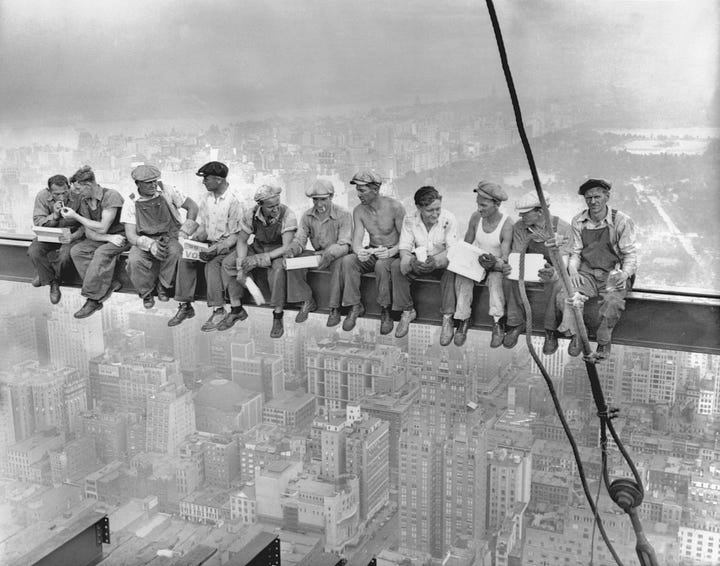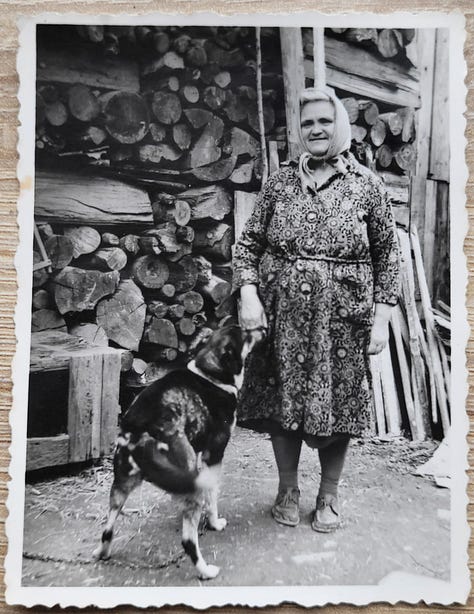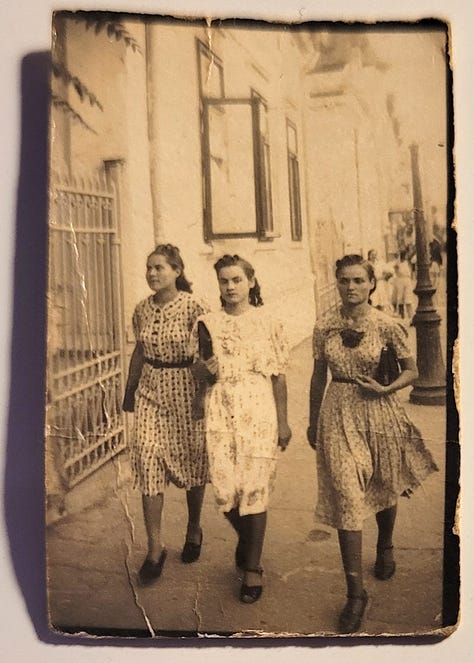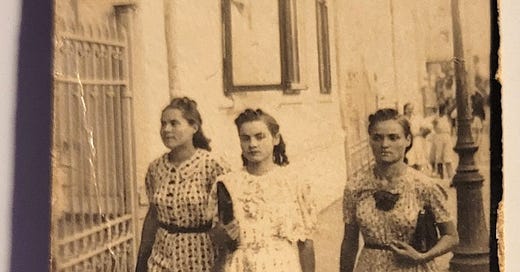The Power of Family Photos to Keep Us Rooted
How old family photos connect us to our roots, no matter where we are in the world.
I recently discovered a box full of old photos of my father’s family. Very old photos. Some were almost a hundred years old, from the late 1930s. The box was mundane, some old cardboard shoebox, but the moment was magical. I was entering through a portal and traveling back in time.
We’ve all seen old black and white photos from those times. The lunch atop a skyscraper from New York in the ‘30s. The Eiffel Tower in Paris under construction, in the late 1800s — a real-life photoshop lookalike, before photoshop existed.


The photos I was holding in my hands were just like the famous ones, but showing my own relatives. The universal and the personal blended into one.
They were young versions of the people I had met many years ago. When I was a kid, they were older adults, but these vintage photos showed the same people, in their own youth days. I took a pause, sipped from my tea, and tried to wrap my head around the fact that the shiny paper with white fringe borders I was holding was a hundred years old. Stashed in a box, under the TV, brushed off as old stuff from my parents’ parents’ time.
And if an image is worth a thousand words, it’s because I started weaving a thousand-word story in my mind about each photo I was looking at.
My great-uncle posing with an injured leg in a plaster cast, during World War II.
My grandpa and he both served in the infantry drafted to protect against possible invasion on the Danube, on the river’s lower course before it flowed into the Black Sea. Despite the injured leg, he seemed happy in the photo — happy to show off he still had a leg, happy to still be alive.
My father, surrounded by his school friends, all boys, with a mischievous look in their eyes.
What forbidden deed might have they done before being immortalized in this photo? This 14-year-old, round-faced, grinning schoolboy — is this my father? What was the color of his shirt, I wondered. The black and white photo hides that detail, but the question is part of my thousand-word inner story. And these other grinning boys whom I never met and will never meet, were they close, how many secrets did they keep of one another? What games did they play back then?



To immortalize = to make someone immortal
In Romanian, this verb refers to ‘taking a photo’ of someone.
I browse through the pile and find another little gem.
My great-aunt as a young woman with a feisty look and a chic style.
She looked so determined, and so chic at once to me (see the middle photo above). I had seen her many times during my childhood. To me, she was a plump lady, with a bad leg, who walked slowly. An old lady, in my young mind. But this feisty girl, barely out of her teenage years strutting the streets of her town?! The same person. What a miracle. I wondered where they bought their shoes, where they got their fashion inspiration.
My grandma with one of her dogs, which I never met, in the house they lived in before I was born.
The place where I’ve only ‘been’ carried in my mother’s belly. Was grandma still a seamstress then or had she already ‘pivoted her career’ and become a bee-keeper?
Looking at grandma in the photo, I am reminded of the perfume she kept, years later, in their new home, the one I knew during my childhood.
They say the smell is the oldest of the six senses. I cannot describe the scent, I can only feel it. It travels back in time through my olfactory system, like a rocket pushing backwards. I feel it and I feel her through the memory of the scent. If I try to describe it, it feels trivial. A strong whiff of a woody fragrance, infused with some light white flowers, maybe lily of the valley — so generic it’s bland. But in my mind’s memory, it’s a specific scent coming from a thick bottle she never used, always kept for an important occasion that never came. If she only knew the times I kept smelling it and tried it out without her looking!
Another photo pulled out, another thousand-word story forming in my mind.
My grandparents and their friends at a labor strike.1
I cannot make out what they demonstrated from the text on their handwritten banners, the image is too blurry. The photos were lower quality 80+ years ago, you know. But I do get to see my grandparents surrounded by their work colleagues, maybe friends. Something I never got to see in real life. They were young, lit up by a cause, powerful on the streets of their town — which, decades later, also became my town. After it was theirs, the town became mine to strut onto its streets. Like an old golden brooch passed on from generation to generation.
I felt a strong, physical pull toward the people in the photos. Most of them were my blood relatives, the blood running in my veins had come from them, from their world.
I often feel rootless as an almost 20-year migrant, and while that is liberating and light, there are also moments when it’s heavy and lonely. I got used to walking through the world without any family close. But looking at these old leaves of my family tree with the roots of a thick 100+-year-old tree trunk, I felt that unique pull of family.
When we are aware of our predecessors being there, somewhere, not alive anymore but somewhere around in the ether — it feels empowering. I feel more courageous to do things I’d been afraid of, it feels like they are watching down on me with love.
We are taught we are the absolute individual(istic) heroes of our lives, that we have full autonomy to do and be whatever we want, if only we worked a little harder, hustled a little longer.
Some of us jet set to Bali for a long weekend, others move to modern-day metropolises half the size of the Roman Empire, feeling like a secret agent for a while.
We can go anywhere and become anything, they told us. But watching old family photos, especially extended family, reminds us that we are indeed part of an invisible spider network of people. We have the same blood running through us as the blood that ran through the people in the 100-year-old photos we hold. We carry pain and pleasure they sent us shooting straight up through our genes.
When I look at the photos, I am reminded I’m not alone or rootless.
When I climb the 108 floors of the Willis Tower in Chicago all by myself and see the world from above, feeling like a lone eagle, I’ll still feel the connection, through an invisible thread, across oceans and hills, to a great-aunt — and her sisters — who lived in the 1930s and ‘40s in the eastern part of pre-Communist Romania.
Unfortunately, I didn’t take digital snapshots of all the photos I saw back home… When I visit next, I will and will update this essay, pour l’amour de l’art.
If you enjoyed this piece, the best way to support me is to share it ❤️, either on social media or restack it 🔄 here on Substack. It's an easy click for you, and it helps me reach more readers. Thank you!





Yes, we carry their blood in our veins. Love this!
Thanks for the nice post Monica.
PS: We also use the word "to immortalize" in Greek, when we take a photo🙂